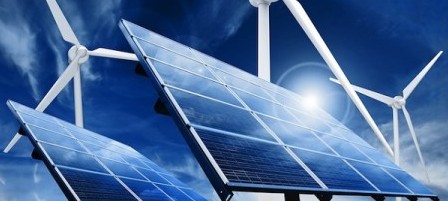Developing world investments on par with developed world, total $301 billion Renewable energy targets and other support policies, now in place in 164 countries, powered the growth of solar, wind and other renewable technologies to a record-breaking energy generation capacity last year: about 135 GW of added renewable energy power increasing total installed capacity to 1,712 GW, up 8.5% from the year before.
The Renewables 2015 Global Status Report published by Renewable Energy Policy Network for the 21st Century (REN21) shows that renewables represented an estimated 27.7% of the world’s total power production capacity as of the end of 2014. This is enough to meet an estimated 22.8% of global electricity demand.
The increase in annual installations can be attributed to the fact that renewable energy targets and other support policies are now present in 164 countries. In terms of source type, solar photovoltaic (PV) capacity additions worldwide have jumped the most over the past 10 years, going up from 3.7 GW in 2004 to 177 GW in 2014. Wind power surged from 48 GW to 370 GW.
For the first time in four decades the world economy grew without causing a parallel rise in carbon dioxide (CO2) emissions, REN21 pointed out.
Excluding 50-MW-plus hydropower plants, global new investment in renewable energy climbed by 17% year-on-year to USD 270.2 billion (EUR 236.9m). Renewables spending in developing countries went up by 36% on the year to USD 131.3 billion and was close to surpassing the investment total for developed economies, which increased by only 3% to USD 138.9 billion.
China’s share of investments in developing countries was 63% and it was one of the leading investors by dollars spent, others being the US, Japan, the UK and Germany. Meanwhile Chile, Indonesia, Kenya, Mexico, South Africa and Turkey each spent over USD 1 billion on renewables.
“Removing fossil-fuel and nuclear subsidies globally would make it evident that renewables are the cheapest energy option,” said Christine Lins, executive secretary at REN21. The latter calculates the amount of these annual subsidies at over USD 550 billion.











Comments